Research Highlights
Research Highlights
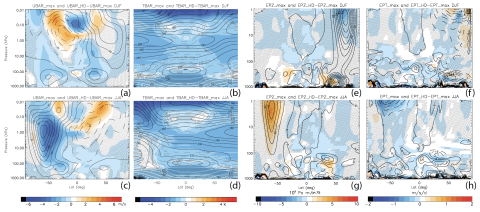
Climate responses under an extreme quiet sun scenario
Han-Li Liu, Matthias Rempel, Gokhan Danabasoglu, Stanley C. Solomon, and Joseph M. McInerney tackle the problem of clearly identifying solar signal from the very large climate variability on broad time scales. Providing a lower bound of the solar minimum condition according to current understanding of solar physics and specifying the extremely low solar minimum condition in a climate model that considers the effects of ocean and middle atmosphere, they identify significant climate responses.
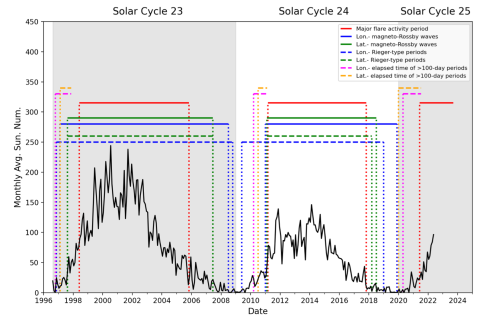
On the connection between Rieger-type and magneto-Rossby waves driving the frequency of the large solar eruptions during Solar Cycles 19 - 25
Mausumi Dikpati, et. al. present findings of a unique evolution of identified shorter periodicities in global solar activity variation, like the Rieger-type, arising from magnetic Rossby waves, throughout the Solar Cycles 19-25. They report is further observational evidence of the strong relationship between the Rieger-type periodicity, magneto-Rossby waves, and major solar flare activity.
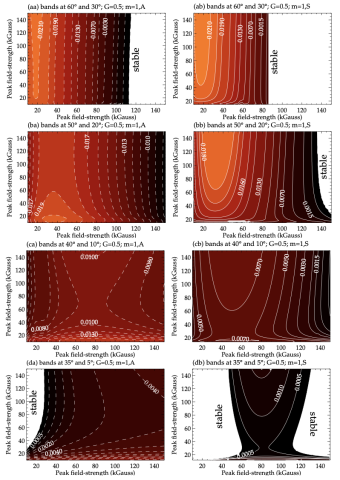
Magnetohydrodynamics Instabilities of Double Magnetic Bands in a Shallow-water Tachocline Model: I Cross-equatorial Interactions of Bands
Bernadett Belucz, Mausumi Dikpati, Scott W. McIntosh, Robert J. Leamon, and Robertus Erdelyi discuss the Extended Solar Cycle (ESC) activity and strong overlapping between cycles. They compute the unstable eigenmodes for MHD Rossby waves at the base of the convection zone and study how the properties of these energetically active Rossby waves change as these band-pairs migrate equatorward.
Cultivating a culture of inclusivity in Heliophysics
Dr. Astrid Maute talked to a large number of heliophysicists while attending the CEDAR 2022 workshop. In this paper she describes a concerning number of heliophysicists that shared terrifying stories and experiences of bullying, harassment, burnout, etc., from across career levels, institution types, and job titles. While writing these position papers, the number of people who privately shared terrifying stories and experiences of bullying and harassment was insane.
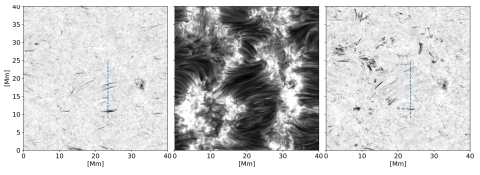
Rapid Blue- and Red-shifted Excursions in H α line profiles synthesized from realistic 3D MHD simulations
S. Danilovic, J. P. Bjørgen, J. Leenaarts, and M. Rempel discuss the important role of Rapid blue- and red-shifted events (RBEs/RREs) in mass-loading and heating the solar corona, but their nature and origin are still debatable. They model these features to learn more about their properties, formation and origin.
The topological nature of the Parker Magnetostatic Theorem
B. C. Low reviews the two-plate initial boundary-value problem of Parker, treating the relaxation of a 3D magnetic field prescribed with an arbitrary topology to a terminal force-free field in a cold, viscous, electrically perfect fluid-conductor. Anchored by their foot-points at the perfectly conducting rigid plates, the relaxing field preserves its topology.
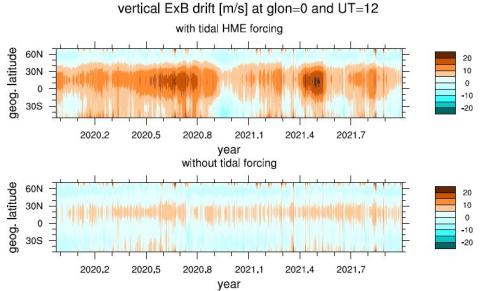
The Ionospheric Connection Explorer - Prime Mission Review
Astrid Maute et. al., following the two-year prime mission of the NASA Ionospheric Connection Explorer (ICON) mission collected a key set of in-situ and remote sensing measurements that are, by virtue of a detailed mission design, uniquely comparable, ICON provides for new investigations of the mechanisms that control the behavior of the ionosphere-thermosphere system under both geomagnetically quiet and active conditions.
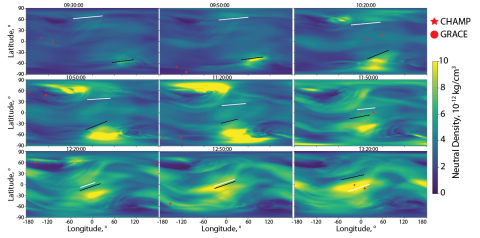
Thermospheric Density Perturbations Produced by Traveling Atmospheric Disturbances during August 2005 Storm
K. H. Pham, W. Wang, H. Liu, D. Lin, M. Wiltberger, et al. discuss how during geomagnetic storms, increased activity within the geospace environment causes large scale plasma convection to occur and electrons to precipitate into the upper atmosphere. The enhanced heating of the thermosphere by the plasma convection and electron precipitation can produce large perturbations in the neutral density.
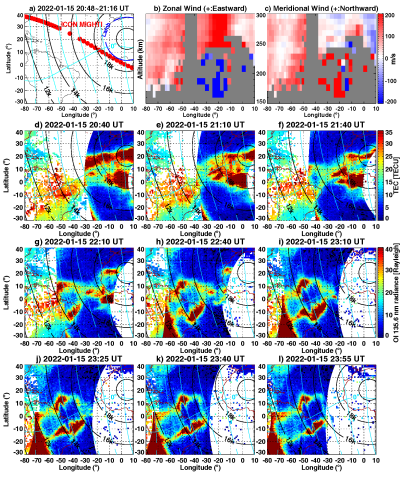
Pronounced suppression and X-pattern merging of equatorial ionization anomalies after the 2022 Tonga volcano eruption
Wenbin Wang, Liying Qian, et. al. investigate the crests variations and associated ionosphere-thermosphere disturbances following the 2022 Tonga Volcano eruption, dramatic suppression and deformation of the equatorial ionization anomaly (EIA) crests occurred in the American sector ∼14,000 km away from the epicenter.